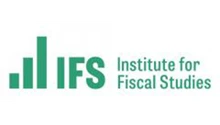Recent increases in the UK government’s cost of borrowing have sparked debates about the public finances and the direction of economic policy. Some analysts have made misleading comparisons to the adverse bond market reactions to the previous government’s mini-budget of 2022.
The UK government’s cost of borrowing has been rising gradually since late 2024. That cost is measured in gilt yields, which give an indication of the return that an investor might expect from buying the gilt and holding it to maturity (UK Debt Management Office).
Ten-year gilt yields rose from 3.9% in September 2024 to 4.4% in December 2024. This was followed by large fluctuations in January 2025, reaching a high of 4.9% before coming back to just over 4.5% today.
Such increases are not unique to the UK, but part of a global trend that is partly led by rising bond yields in the United States. Bond yields are the annual returns on bond investments, expressed as a proportion of the bond price.
The policies announced by the second Donald Trump administration have driven up US inflation expectations and consequently led markets to believe that interest rates might remain higher for longer.
Rising borrowing costs in the United States could have been transmitted to the UK through ‘contagion’. This is where UK investors look at price movements in the United States and try to infer information from them, using a ‘shoot first, ask questions later’ approach in the short run.
But global factors cannot solely explain UK bond price movements, since other comparable markets such as Germany’s did not experience the same magnitude of price changes.
Are comparisons with 2022 justified?
This rise in borrowing costs has been compared to the bond market reactions following the 2022 mini-budget announced by then prime minister Liz Truss and her chancellor Kwasi Kwarteng.
But these comparisons are misplaced. The 2022 mini-budget triggered turmoil due to the announcement of large unfunded tax cuts, leading to fears of rising public debt and a loss in the credibility of the UK government’s finances.
Indeed, some argue that the recent bond crisis has been exaggerated. Specifically, the risk premium – the extra returns that investors demand for holding more risky assets – tripled after the 2022 mini-budget, whereas the current risk premium is close to average. This suggests that financial market participants are not concerned about the UK’s fiscal situation in the same way as they were in 2022.
Are there UK-specific factors that could have contributed to the rising government borrowing costs?
The latest UK budget, in October 2024, played some role in driving up government borrowing costs, even before the US elections. This is because of the potentially inflationary impact of the extra spending planned by the government, which may lead the Bank of England to lower interest rates at a slower pace.
This rise in borrowing costs will exert pressure on the government’s finances. Indeed, it has been argued that the UK gilt market is highly sensitive to news and more vulnerable to adverse shocks due to concerns about the sustainability of public debt.
Has quantitative easing had an effect?
Quantitative easing (QE) is when central banks – like the Bank of England in the UK – buy financial assets, such as government bonds, from banks to boost the economy in times of slowdown. The Bank of England’s QE operations between 2009 and 2021 involved the purchase of £875 billion of gilts. Since March 2022, the Bank has reversed some of these purchases (a process known as quantitative tightening or QT).
The Bank of England bought gilts when interest rates were low, but now that interest rates are much higher, selling or redeeming these gilts incurs a loss, which adds to the government’s debt, since any losses are indemnified by the Treasury.
As a result, it is estimated that the QE programme may result in the debt-to-GDP ratio being four percentage points higher than it would have been otherwise, although the magnitude of losses can only be known with certainty when the QT operations end.
Are the UK’s public finances sustainable?
The UK government’s fiscal position faces several challenges. Low economic growth and productivity, an ageing population, high government debt and high borrowing costs are among the top ones. With real interest rates higher than the real GDP growth rate, it is difficult to reduce the debt-to-GDP ratio without tough decisions about taxes and public spending, which the government has been avoiding.
Further, the October 2024 budget did not sufficiently raise overall investment or GDP estimates five years from now, In addition, economic growth and productivity forecasts from the Office for Budget Responsibility (OBR) are widely seen as being overly optimistic. Given that, the country’s finances may be vulnerable if sufficient economic growth rates are not achieved.
What policies could address these challenges?
The UK government’s financing issues arguably face significant political constraints given that the tax burden is the highest it has been in decades, coupled with the Labour Party’s commitment to increased public spending.
While cutting spending or raising taxes could create ‘fiscal headroom’ – the financial buffer a government has within the constraints of its fiscal rules – it would be politically challenging.
At a recent National Institute of Economic and Social Research (NIESR) webinar, Helen Thomas (chief executive of Blonde Money) called on the government to clarify their mandate and what they plan to do to raise growth amid fiscal constraints, rather than focusing their announcements on what they will not do.
If tax rises become necessary, experts advocate that the government considers taxes that are less detrimental to growth such as land taxes, VAT or taxes on the use of non-renewable energy, rather than taxes on labour or, especially, capital.
Jagjit Chadha (University of Cambridge and former director of NIESR) suggests abandoning the current fiscal rules to allow more flexibility in government spending. But since the fiscal rules have been recently revamped, further changes in the short term could cause negative market reactions. NIESR has long advocated for a different approach to fiscal policy, one that replaces arbitrary rules with a strategy focused on the government's fiscal objectives.
Overall, the current state of UK public finances requires the chancellor to set out a coherent and credible path towards budget sustainability, including measures to increase productivity growth, more efficient spending and a willingness to confront the government's debt challenges.
Where can I find out more?
- The causes of the bond market unrest: NIESR blog.
- Analysing the costs of quantitative easing: NIESR briefing by Bill Allen.
- The bond market crisis has been exaggerated: Article by Jagjit Chadha.
- The British fiscal morass and why the October budget made it worse: NIESR policy paper by Paul Mortimer-Lee.
- Why UK gilt yields have risen since the US election and what the government might do: NIESR article by Sushil Wadhwani.
- Gilt yields on the march: Article by Ben Caswell.
Who are experts on this question?
- Bill Allen
- Ben Caswell
- Jagjit Chadha
- Stephen Millard
- Paul Mortimer-Lee
- Helen Thomas
- Sushil Wadhwani









































